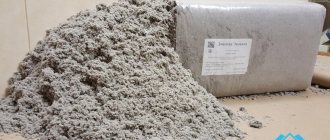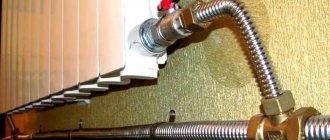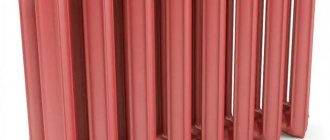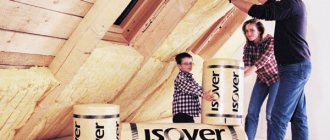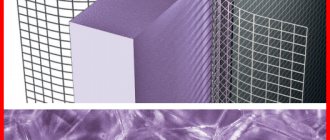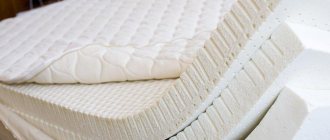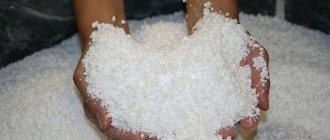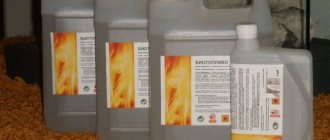Due to the evaporation and condensation of the refrigerant in a closed circuit, the thermal energy of the air is selected and released into the environment. This is the operating principle of any refrigeration machine. The physical state and other parameters of the working substance are constantly changing. But most ordinary users are interested in only one characteristic - freon pressure in the air conditioner.
The rationale is clear: many owners of private houses and apartments want to service the split system themselves, filling the refrigerant in the simplest way found on the Internet. We will reveal the essence of the method in 3 stages - the theoretical part, diagnostics and instructions for refueling.
History of appearance
After signing the Montreal Protocol in 1987, participating countries began to abandon refrigerants that destroy the Earth's ozone layer. This has led to the development of new refrigerants and systems for their use. The protocol called for the phasing out of halogenated hydrocarbons (haloalkanes).
Freon r410a was developed as a refrigerant with low ozone depletion potential (ODP). This indicator for freon 410a is 0. R410-a gas has a high global warming potential (GPW) of 1800. It traps and retains 1800 times more heat than an equivalent mass of carbon dioxide.
Initially it was planned to use it as an alternative to R-22 freon in new equipment. Since the temperature glide of R-410A freon is less than 0.3 degrees, it was ideal for these purposes. But subsequently more suitable alternatives to freon 22 were developed.
Some manufacturers have patented mixtures under their own brands. The characteristics of 410 freon remain the same regardless of the brand name. It is known by the names:
- SUVA 9100;
- AZ 20;
- Forane 410a;
- Solkane 410.
Freon R410a brand Genetron AZ 20, manufactured by Honeywell
Principle of operation
Of course, as with any diagnostics, to carry it out you need to have at least a general understanding of the equipment. The device of a car air conditioner is nothing more than the “heart” of the entire installation - a compressor that constantly compresses the still liquid freon that constantly runs along the external and internal lines. It is at the moment of compression that heat leaves the vehicle interior, and the working substance, already in carbonated form, moves further through the tubes, thus cooling. At this moment, all passengers in the car feel pleasantly cool.
However, for trouble-free operation of the split system, every driver must make sure that there are no malfunctions in the car air conditioner, otherwise in the summer you will have to drive with the windows open, which means dust, dirt and extraneous sounds. The likelihood of such embarrassment is significantly reduced with regular diagnostics, which, according to “experienced” ones, should be carried out at least once a year
It doesn’t matter how this will be done, be it on your own or with the help of professionals. But honestly, I don’t see much point in overpaying when you can do everything yourself
Below, your humble servant will prove the correctness of his statement to those who think otherwise.
Peculiarities
Due to its high global warming potential, r410a refrigerant must be recycled. But due to its higher density than air, the gas does not rise into the atmosphere during a leak. Therefore, it actually does not affect the greenhouse effect.
Compared to freon r22, r410-a gas has a higher density. Therefore, the walls of the evaporator, condenser, copper tubes and other system components must be thicker. This leads to higher cost of systems. But due to better cooling performance, the cooling system is more compact.
The density of R410a refrigerant is 50% greater than that of R22. When retrofitting, significant modifications to the equipment are required. Cooling capacity is 35-45% higher. It is a substitute for HCFCs (hydrochlorofluorocarbons) in:
- Household, light commercial and industrial air conditioners;
- Household and industrial refrigerators and cooling units;
- Refrigerated vending machines;
- Systems for transporting refrigerated and frozen goods.
Retrofit, also Retrofitting (English retrofit ['retrəufɪt] from retro- “retro, back in time” + fit “adapt”) - Modernization, which involves adding new technology or its properties to older systems.
Wikipedia
410 refrigerant is a pseudoazeotropic mixture. The evaporation and condensation temperatures of its components are very close. When there is a leak, they evaporate in equal quantities, the composition of the gas does not change. Therefore, it can be refilled into the system rather than replaced completely.
Checking the valves of the outdoor unit
Another way to find out that there is no or little refrigerant in the air conditioner is to check the valves of the outdoor unit. They are located at the bottom, on the right side and can be covered with a protective casing (see photo). This option works best in the warm season.
Location of air conditioner service valves.
Before checking, turn on the air conditioner at full power and set the minimum temperature. Let it run for 5-10 minutes
Then pay attention to the valves. If condensation has accumulated on them, they have cooled down - everything is in order, there is refrigerant in the system
If there is no condensation on the service valves and their temperature has not changed, the freon has completely left the air conditioner. If frost or ice has formed on the surface of the valves, there is not enough refrigerant in the system. Ice forms for the same reason as in the outdoor unit.
Latest publications
Table of boiling point and pressure of freon 410
This table shows the boiling point of freon 410 and pressure in air conditioning and other refrigeration equipment. The operating pressure of R410a freon in the air conditioner is indicated in absolute atmospheres (bar).
| T, °C | Liquid | Gas | T, °C | Liquid | Gas |
| -70 | 0,36 | 0,35 | +2 | 8,53 | 8,50 |
| -68 | 0,40 | 0,40 | +4 | 9,08 | 9,05 |
| -66 | 0,45 | 0,45 | +6 | 9,65 | 9,62 |
| -64 | 0,51 | 0,51 | +8 | 10,25 | 10,22 |
| -62 | 0,57 | 0,57 | +10 | 10,88 | 10,85 |
| -60 | 0,64 | 0,64 | +12 | 11,54 | 11,50 |
| -58 | 0,72 | 0,71 | +14 | 12,23 | 12,19 |
| -56 | 0,80 | 0,80 | +16 | 12,95 | 12,91 |
| -54 | 0,89 | 0,88 | +18 | 13,70 | 13,65 |
| -52 | 0,98 | 0,98 | +20 | 14,48 | 14,43 |
| -50 | 1,09 | 1,09 | +22 | 15,29 | 15,24 |
| -48 | 1,20 | 1,20 | +24 | 16,14 | 16,09 |
| -46 | 1,33 | 1,32 | +26 | 17,02 | 16,97 |
| -44 | 1,46 | 1,45 | +28 | 17,94 | 17,88 |
| -42 | 1,60 | 1,60 | +30 | 18,89 | 18,84 |
| -40 | 1,76 | 1,75 | +32 | 19,89 | 19,83 |
| -38 | 1,92 | 1,91 | +34 | 20,92 | 20,86 |
| -36 | 2,10 | 2,09 | +36 | 21,99 | 21,92 |
| -34 | 2,29 | 2,28 | +38 | 23,10 | 23,04 |
| -32 | 2,49 | 2,48 | +40 | 24,26 | 24,19 |
| -30 | 2,70 | 2,69 | +42 | 25,45 | 25,38 |
| -28 | 2,93 | 2,92 | +44 | 26,70 | 26,62 |
| -26 | 3,18 | 3,17 | +46 | 27,99 | 27,91 |
| -24 | 3,44 | 3,43 | +48 | 29,32 | 29,25 |
| -22 | 3,71 | 3,70 | +50 | 30,71 | 30,63 |
| -20 | 4,01 | 3,99 | +52 | 32,14 | 32,06 |
| -18 | 4,32 | 4,30 | +54 | 33,63 | 33,55 |
| -16 | 4,65 | 4,63 | +56 | 35,17 | 35,09 |
| -14 | 4,99 | 4,98 | +58 | 36,76 | 36,69 |
| -12 | 5,36 | 5,34 | +60 | 38,42 | 38,34 |
| -10 | 5,75 | 5,73 | +62 | 40,13 | 40,06 |
| -8 | 6,15 | 6,13 | +64 | 41,91 | 41,84 |
| -6 | 6,58 | 6,56 | +66 | 43,75 | 43,69 |
| -4 | 7,03 | 7,01 | +68 | 45,67 | 45,62 |
| -2 | 7,51 | 7,48 | +70 | 47,65 | 47,62 |
| 0 | 8,01 | 7,98 | — | — | — |
Ultraviolet dye method
This technique is mainly used for automobile air conditioners.
The general essence of this technique is quite simple:
- A special dye is pumped into the system, which is tested.
- After some time, paint appears at the leak site, where it is detected using an ultraviolet lamp
The main disadvantage of this option is the need to wait for the result.
Typically, this option is used when others are not effective.
The second drawback is that the dye is not cheap and requires the purchase of other additional equipment - an ultraviolet lamp and special glasses.
Technical characteristics of refrigerant r410a
| Characteristics of R410a | Unit change | Meaning |
| Molecular mass, | g/mol | 72,58 |
| Boiling point at 1 atm | °C | -51,58 |
| Freezing point | °C | — |
| Critical temperature | °C | 72,1 |
| Critical pressure | MPa | 4,92 |
| Critical density, | kg/cub.m | 488,9 |
| Liquid density at 25 °C | kg/cub.m | 1062 |
| Specific heat capacity of liquid at 25 °C | kJ/kg | 1842,192 |
| Specific heat capacity of vapor at 1 atm | kJ/kg | 711,756 |
| Heat of vaporization at boiling point | kJ/kg | 264,3 |
| Saturated vapor density at -25 °C | kg/cub.m | 18,5 |
| Saturated vapor density at -51.58 °C | kg/cub.m | 4 |
| Steam pressure at 25 °C | MPa | 0,1653 |
| Flammability limit in air | % volume | No |
| Self-ignition temperature, 0C | °C | — |
| Flammability class | A1 | |
| Ozone Depletion Potential ODP | 0 | |
| Global Warming Potential HGPW | 0,45 | |
| Global Warming Potential GWP | 1890 | |
| MPC at the workplace, ppm | 1000 |
What is temperature glide
It is best illustrated using the example of R407c refrigerant. At atmospheric pressure its boiling point is -43.6 °C. With her, he begins to boil. Since it is non-azeotropic, only one component evaporates.
As it evaporates, the composition of the liquid refrigerant changes. Its characteristics change accordingly. The boiling point increases. At one point it stops going into the gaseous phase.
In order for R-407c to continue boiling, it must be heated. In order for it to reach the dew point and boil completely, it must be heated to -36.4 °C. Then the entire refrigerant will turn into a vapor state. The difference between the first and second temperatures is 7.2 degrees Celsius. This is the temperature glide. It is expressed in degrees using the formula:
Tg = Tmax – Tmin
- Tg – Temperature glide;
- Tmax – Dew point at a given pressure;
- Tmin – Boiling point at a given pressure.
Composition of freon r410a
Refrigerant R410-a is a two-component substance. The composition of refrigerant r410a includes:
- Freon r32, difluoromethane (50%);
- Freon r125, pentafluoroethane (50%).
The components that make up 410 freon have similar characteristics and the dependence of boiling point and pressure. Such a mixture is called pseudoazeotropic (close to azeotropic). That is, freon 410 does not change its composition when leaking - freons R32 and R125 evaporate at the same speed.
Safety rules for handling freon
Freon R404A is the safest refrigerant for human health and the environment. By following the rules of use, dangerous situations can be avoided. Thanks to the anisotropic structure, the performance properties of the composition are preserved. For safety reasons, it is not allowed to mix the composition with air. During operation of the equipment, it is necessary to avoid high temperatures and increased operating pressure, which provoke the ignition of the freon.
The refrigerant is dissolved by essential oil, but does not mix with mineral lubricant. When replacing freon, the manufacturer recommends always changing the oil. When diagnosing the system to identify a leak, it is prohibited to add air to the circuit with R404A to increase the pressure. Due to the stability of the structure and proportions, the mixture can be topped up when servicing refrigeration equipment.
The composition does not require compliance with transportation restrictions and can be transported in cylinders by any type of transport in compliance with safety rules. Gas containers are under pressure, so it is prohibited to store them in the open sun to prevent heating above 50 °C. Freon should be stored in sealed containers at a safe distance from open fire sources and heating devices. The warehouse is equipped with effective ventilation for ventilation.
The online store of spare parts for refrigeration equipment "ZIKUL" offers to purchase refrigerant R404A, supplied by the manufacturer in special cylinders with a gas weight of 10.9 kg.
r32 and r410a
The advantage of freon r32 over r410a is its safety for the environment. Its global warming potential is 2.8 times lower. It is 645 units, while the GWP characteristic of freon r410-a is 1800 units.
The disadvantage of freon R32 is its flammability. It is a flammable gas. When used in small systems, its mass is small, and in case of fire the probability of fire is low. But when systems with large amounts of refrigerant leak and ignite, the risk of fire is much higher.
It is impossible to answer the question which refrigerant is better than r410a or r32. But in small systems it is preferable to use R-32 freon, in large installations R-410a. This is due to fire safety; the cooling capacity of the refrigerants is the same.
Types of air conditioners
Manufacturers produce all types of air conditioners, investing heavily in their business. As a result, a modern consumer can choose any model according to any parameters.
Air conditioners split systems
Split type devices are great for small rooms.
There are two types of such devices: separation systems and multi-dividing systems. Wall-mounted split system units consist of two blocks: a small internal unit and a large external module.
The external device contains the loudest devices. A multi split system is formed by combining several indoor units into a single outdoor module. This allows you to optimally preserve the design of the house.
Ceiling type air conditioners
In rooms with a large area, as a rule, units for installation on the ceiling are chosen. Their advantage is that the cooled air is evenly distributed horizontally throughout the room without directly affecting people.
A massive ceiling-type air conditioner is almost invisible, and it is indispensable when extensive air flow is needed to the most remote parts of the room, while the jet length in some models reaches up to 55 meters.
There are also duct and cassette ceiling air conditioners. In this case, the first devices are completely hidden behind a suspended ceiling or in a channel, and the second type - cassette blocks have the form of ceiling tiles measuring 600x600 mm.
Split system
Although the disconnect system consists of indoor and outdoor modules, its operating principle is no different from any other type of domestic ceiling air conditioner.
The housing of the external unit itself contains a heat exchanger, a fan and a compressor. Additional elements of the split system are a dryer, expansion valve and connecting pipes.
And also to connect the unit to the electrical network, it contains the necessary starting and control devices.
Industrial air conditioners
Such devices are developed to serve areas of more than 350 meters and therefore they have a number of features, thereby differing from household air conditioners. The design of precision equipment may vary.
Multizone devices. These VRF and VRV air conditioning units include up to 64 indoor modules and up to three outdoor units. In total, they are located on communications up to 300 meters long.
It is possible to set a separate temperature for each indoor module and provide its own microclimate in each room. The error in the set temperature is only 0.05 degrees.
"Chiller fan coil." Devices with this system differ in that not freon is used inside the circuit, but water or antifreeze. The central refrigeration unit is called a “chiller”, and the heat exchange elements are called “fan coils”.
Chiller-fan coil circuit 2
The advantage of such a unit is that the distance between these components can be any, since water flows through ordinary pipes.
Central and rooftop air conditioners. These devices are varied in their action. They are used in the form of heat exchange units, fans, air purifiers and humidifiers.
It is called central because the air mass is processed in the indoor unit and then moves through pipes through the rooms. Installation of air conditioners of this type and installation of communications is particularly complex and requires an external source of cold.
If possible, it is better to choose roof monoblocks, which are easier to install.
Oil for 410 freon
The equipment requires synthetic polyester (POE) compressor oil to operate. The viscosity is selected depending on the equipment and operating conditions. There are several manufacturers producing lines of refrigeration oils for 410 refrigerant:
- Mobil EAL Arctic 32.46, 68.100;
- PLANETELF ACD 32.46, 68.100;
- Suniso SL 32, 46,68,100;
- Emkarate RL 32, 46, 68, 85,100, 170, 220;
- Biltzer BSE 32, 55, 170, 170L.
How to properly refuel your device
If you refuel the split unit, adhering to and following certain rules, then there will be no damage to the system.
- The easiest and safest way to charge freon into the installation is to use a scale. Firstly, you will always find all the necessary information on a metal nameplate that is attached to the block. In addition, keep in mind that if during installation you used a longer refrigerant line than the manufacturer specified, you will have to top up the system.
- When refrigerant is refilled into the unit, it is necessary to release the remaining freon outside so that the oil remains inside the split system. To do this, the valve on the valve through which the gas will flow out is opened slightly so as to prevent oil leakage. It takes approximately several hours for the refrigerant to leave the device.
Toxicity of freon r410a and harm to human health
If the refrigerant comes into contact with the skin, it degreases it. This may cause itching and irritation. When freon r410a enters in a liquid state, it evaporates. This leads to cooling of the skin, possibly frostbite.
The toxicity of freon r410a has been tested on animals. Throughout their lives, male rats breathed air laced with R410a refrigerant. An increased risk of developing fibrosarcomas of the salivary glands has been noted.
Fibrosarcoma is a malignant tumor that is formed from fibrous connective tissue cells.
No acute effects of poisoning or intoxication were recorded. When the concentration of gas in the air increases, it displaces oxygen. Negative consequences occur due to its deficiency, and not due to the toxicity of the r410a refrigerant. What may happen:
- Dizziness and loss of coordination;
- Increased blood pressure and pulse rate;
- Increased frequency and depth of breathing, shortness of breath;
- Arrhythmia (with acute lack of oxygen).
How to find a freon leak in a split system with your own hands?
The choice of detection method depends on the nature of the damage to the route, its length and the possibility of access to the suspected location of the freon leak. In addition, some methods require the use of special equipment and materials. Among them, the most common are the following:
- Soap solution. It is used when the location of a freon leak is theoretically known (for example, when oil stains or drips are detected in a certain section of the route) and allows you to visually determine the leak. Apply a regular soap solution or a special product in an aerosol package to the suspected site of damage.
- Immersion in water. The simplest method for detecting leaks in the refrigeration circuit, which is convenient to use if the part being tested is small in size, can be removed from the system and sealed.
- Penetrating dye. This method involves pumping a special ultraviolet dye into the cooling circuit, which, after some time, can be detected in leakage areas. Unlike a soap solution, the dye allows you to find a leak along the entire length of the route, however, the disadvantage of this method is the long wait for the result and the need for expensive equipment.
- Pressure test. Allows you to find the location of depressurization by increasing the pressure in the system (but not higher than the limits set by the manufacturer). To do this, dry nitrogen is pumped into the circuit, the pressure is increased to the maximum level, after which its value is recorded using a pressure gauge. A decrease in pressure over time indicates a leak.
- Leak detectors. Special diagnostic equipment allows you to find freon leaks with a high degree of accuracy. Currently, halide, ultrasonic and electronic leak detectors are used to test air conditioner circuits. The latter are the most effective tools because they have adjustable sensitivity levels. How to check an air conditioner for freon leaks using a leak detector? To do this, the place of possible leakage is carefully wrapped with polyethylene, then the pressure in the system is slightly increased, and after that a small slot is made in the lower part of the polyethylene, to which the device is brought.
Characteristics of r410a refrigerant on the saturation line
| T, | Davl. | Density | Enthalp. | Entropy | Davl. | Density | Enthalp. | Entropy | Heat |
| °C | sat. | kg/cub.m | kJ/kg | kJ/(kg*K) | sat. | kg/cub.m | kJ/kg | kJ/(kg*K) | steam generation (kJ/kg) |
| -50 | 1,123 | 1339,761 | 131,4 | 0,726 | 1,122 | 4,526 | 401,5 | 1,936 | 270,1 |
| -45 | 1,417 | 1325,036 | 137,8 | 0,754 | 1,415 | 5,616 | 404,6 | 1,924 | 266,8 |
| -40 | 1,77 | 1309,941 | 144,2 | 0,782 | 1,767 | 6,909 | 407,5 | 1,913 | 263,4 |
| -35 | 2,191 | 1294,45 | 150,7 | 0,809 | 2,187 | 8,435 | 410,5 | 1,902 | 259,8 |
| -30 | 2,689 | 1278,534 | 157,3 | 0,837 | 2,683 | 10,224 | 413,3 | 1,891 | 256 |
| -25 | 3,273 | 1262,162 | 164 | 0,864 | 3,265 | 12,312 | 416,1 | 1,882 | 252 |
| -20 | 3,954 | 1245,297 | 170,9 | 0,891 | 3,944 | 14,738 | 418,8 | 1,872 | 247,8 |
| -15 | 4,743 | 1227,897 | 177,9 | 0,918 | 4,73 | 17,546 | 421,3 | 1,863 | 243,4 |
| -10 | 5,651 | 1209,914 | 185,1 | 0,945 | 5,635 | 20,785 | 423,8 | 1,854 | 238,7 |
| -5 | 6,69 | 1191,292 | 192,5 | 0,973 | 6,67 | 24,511 | 426,1 | 1,846 | 233,6 |
| 0 | 7,872 | 1171,968 | 200 | 1 | 7,849 | 28,79 | 428,3 | 1,837 | 228,3 |
| 5 | 9,211 | 1151,863 | 207,7 | 1,028 | 9,184 | 33,696 | 430,2 | 1,829 | 222,5 |
| 10 | 10,719 | 1130,887 | 215,7 | 1,055 | 10,688 | 39,317 | 432 | 1,821 | 216,3 |
| 15 | 12,41 | 1108,928 | 223,9 | 1,084 | 12,375 | 45,759 | 433,6 | 1,812 | 209,6 |
| 20 | 14,299 | 1085,849 | 232,5 | 1,112 | 14,26 | 53,149 | 434,8 | 1,803 | 202,4 |
| 25 | 16,399 | 1061,481 | 241,3 | 1,141 | 16,357 | 61,643 | 435,8 | 1,794 | 194,5 |
| 30 | 18,725 | 1035,603 | 250,5 | 1,171 | 18,681 | 71,44 | 436,4 | 1,785 | 185,9 |
| 35 | 21,293 | 1007,926 | 260,2 | 1,202 | 21,247 | 82,798 | 436,6 | 1,774 | 176,4 |
| 40 | 24,116 | 978,057 | 270,4 | 1,233 | 24,07 | 96,062 | 436,2 | 1,763 | 165,9 |
| 45 | 27,211 | 945,435 | 281,2 | 1,266 | 27,165 | 111,722 | 435,2 | 1,75 | 154 |
| 50 | 30,592 | 909,218 | 292,8 | 1,301 | 30,549 | 130,504 | 433,4 | 1,736 | 140,6 |
In this article we have given the characteristics of R-410a freon, its pressure and temperature tables. They also talked about the history of origin and features. You learned about the toxicity of freon r410a and its effect on humans. We hope the publication was useful. Save it to your wall and don’t forget to share with friends and colleagues.
Do you want to get help from a master, a specialist in this field? Go to the professional search portal. This is a completely free service where you will find a professional who will solve your problem. You do not pay for posting an ad, views, or choosing a contractor. If you are a master of your craft, then register on Pro and receive a flow of clients. Your profit is just one click away!
Latest publications
- Which freezer is better, No Frost or regular?
- Top 10 air conditioners for apartments 2020-2021
- 30+ reasons: Why the refrigerator makes strange sounds, how to fix the problem
- 6 brands and 6 models: Which refrigerator to buy, inexpensive but good, with No Frost
- 20+ reasons: Why the refrigerator works but does not freeze, what is the problem, how to fix it
- Atlant, Biryusa, Indesit - which refrigerator is better and why
- Is it possible to place a refrigerator next to the stove? How to protect your refrigerator?
- TOP 10 best manufacturers and brands of refrigerators today
- Freon R407c - characteristics, features of use and replacement
- 13 reasons why the refrigerator constantly works and does not turn off
